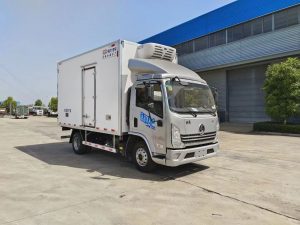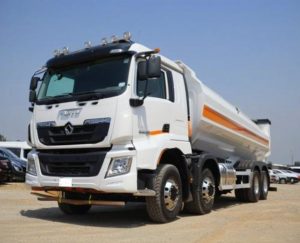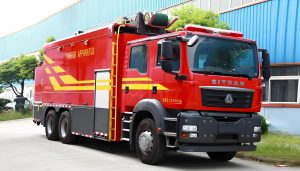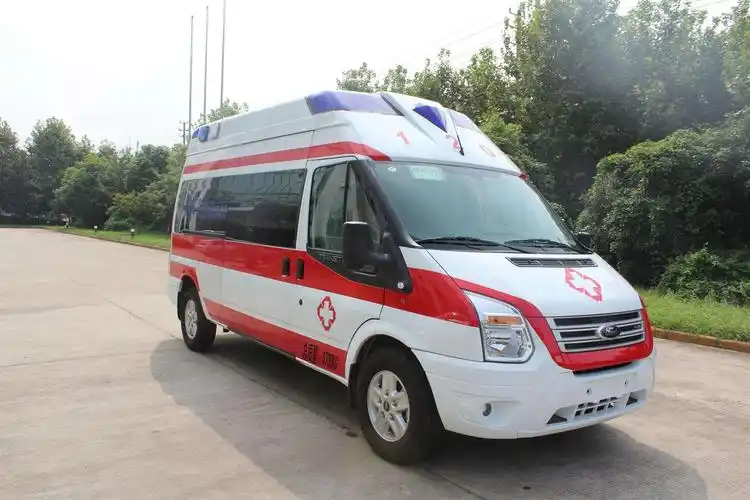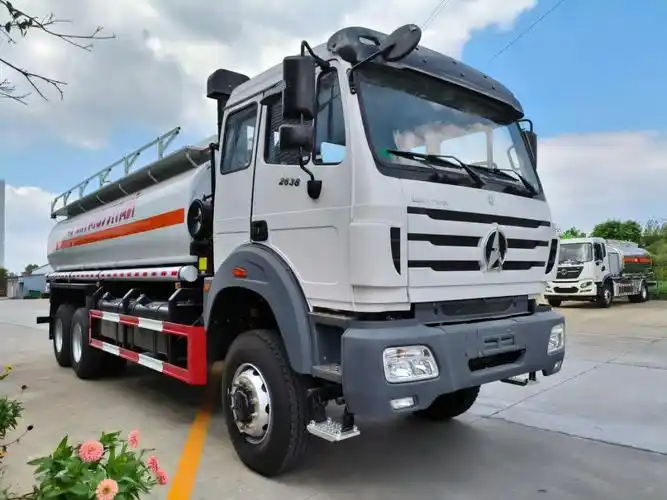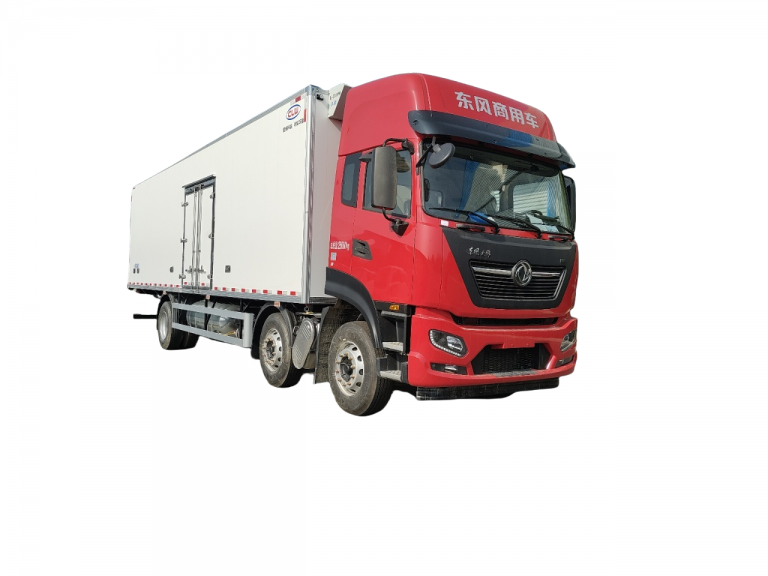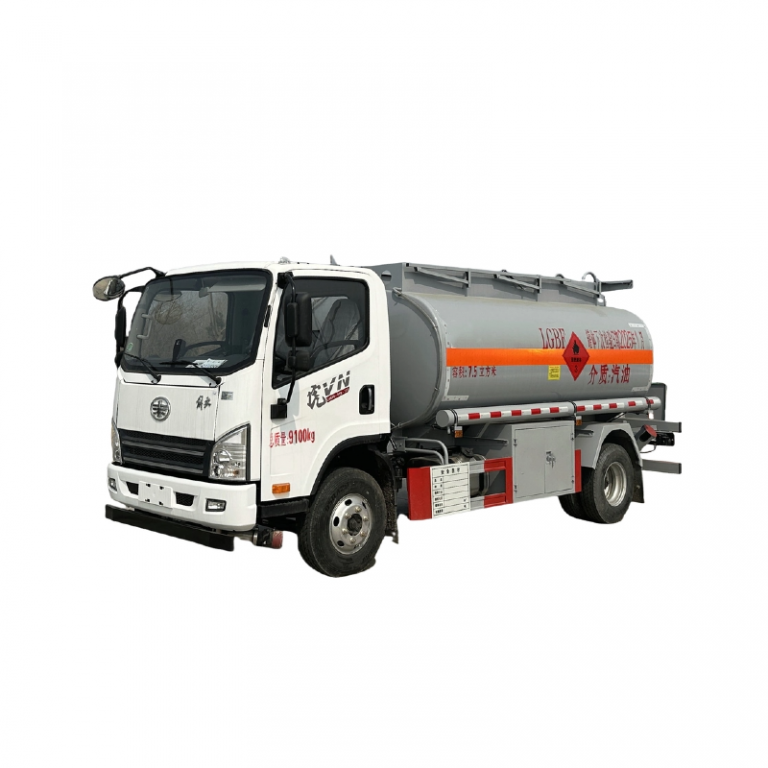Table of Contents
Toggle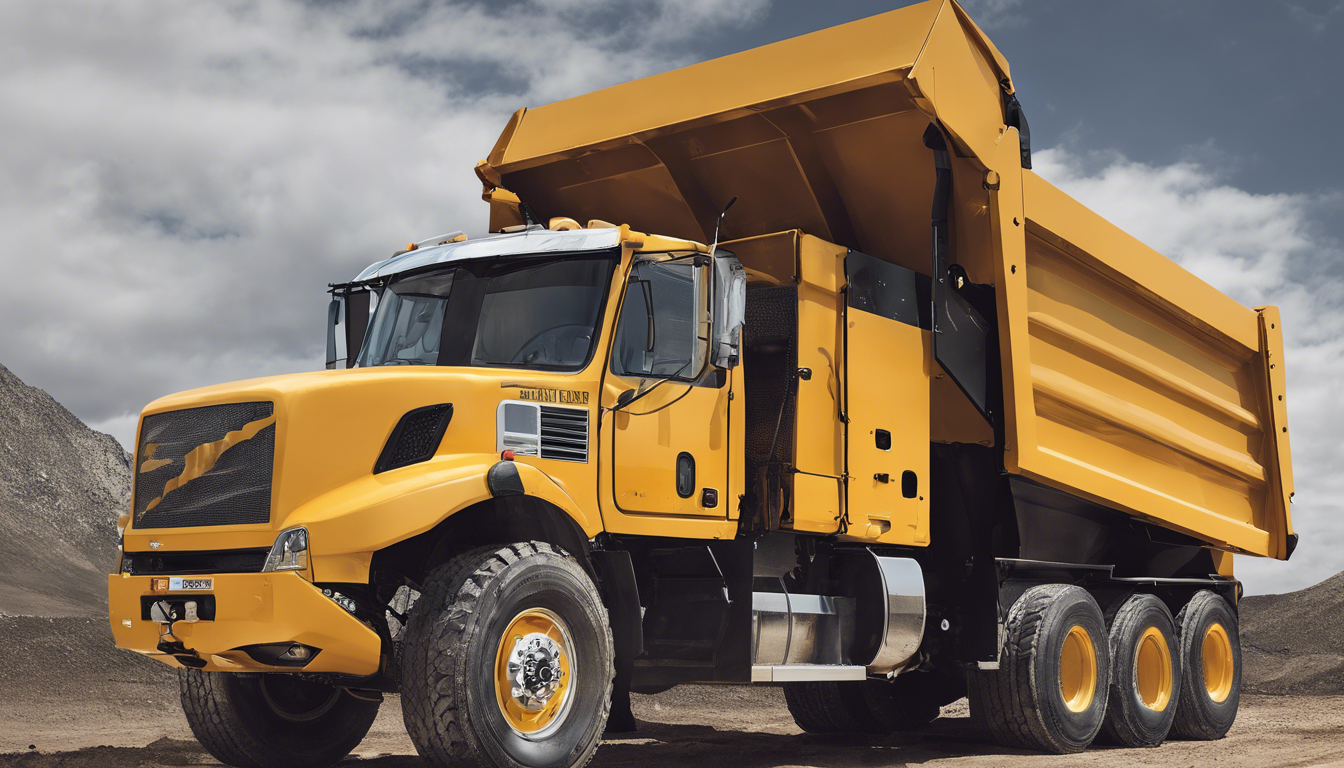
Selecting the right dump truck for your business is a decision that carries significant weight, given the investment involved and the pivotal role the vehicle plays in operations. The choice not only impacts the efficiency and productivity of your projects but also directly affects your bottom line. Understanding the dump truck meaning encompasses not just its physical description but its functionality, capacity, and suitability for various tasks. This decision becomes even more critical when considering the wide array of dump trucks for sale, each designed to meet specific needs and challenges.
This article delves deep into the crucial aspects you need to consider when choosing a dump truck. It covers understanding your business needs, the types of dump trucks available, considerations for payload capacity, engine performance, safety features, cost, budget, and the potential for customization and add-ons. By providing a comprehensive guide, this article aims to arm you with the knowledge to make an informed decision on the best dump truck that not only meets your current demands but also aligns with your future growth objectives.
Understanding Your Business Needs
When selecting the best dump truck for your business, it is crucial to understand your specific operational needs. This understanding will guide your decision-making process, ensuring that you choose a dump truck that not only fits your current requirements but also adapts to potential future demands.
Types of Materials
The nature of the materials you intend to transport plays a significant role in choosing the appropriate dump truck. Different types of dump trucks are optimized for various materials—whether it’s loose aggregates like sand and gravel, larger rocks, or even hazardous materials. For instance, standard dump trucks are well-suited for transporting building materials on construction sites, whereas articulated hauler dump trucks, with their robust build and high clearance, are ideal for moving heavy loads across uneven mining terrains.
Project Scale and Frequency
Understanding the scale and frequency of your projects is essential. If your operations involve large-scale construction or mining projects that require the frequent transportation of massive amounts of materials, a larger dump truck with a high payload capacity, such as a triple-axle dump truck or an off-highway dump truck, might be necessary. Conversely, for smaller projects or those requiring high maneuverability within urban settings, smaller, more agile dump trucks may be more appropriate. This consideration ensures that you are not underutilizing a large truck or overloading a smaller one, which can lead to increased costs or safety hazards.
Work Site Terrain
The terrain of your worksite is a critical factor in selecting a dump truck. For sites with rugged, uneven terrain, such as those found in mining operations, an off-road dump truck designed for rough conditions would be necessary. These trucks are equipped with features like large tires and high clearance to navigate and operate effectively in challenging environments. On the other hand, if your projects are primarily on well-paved, stable surfaces, standard dump trucks or those with fewer axles might suffice.
By carefully assessing these key areas—types of materials, project scale and frequency, and worksite terrain—you can make an informed decision on the most suitable dump truck for your business needs. This strategic approach not only enhances operational efficiency but also contributes to the long-term success and scalability of your operations.
Types of Dump Trucks
Understanding the various types of dump trucks available is crucial for selecting the right one to meet the specific needs of your business. Each type offers unique features and benefits suited for different applications and environments.
Standard Dump Trucks
Standard dump trucks, also known as rigid dump trucks, are the most commonly used type across many industries. They feature a chassis with a hydraulic ram and a dump body hinged at the rear. The hydraulic ram lifts the bed to allow material to be dumped from the back. Standard dump trucks are praised for their maneuverability and simplicity, making them suitable for a wide range of tasks in construction and hauling. They typically have a large resale market due to their widespread use, which eases the process of finding parts and support.
Transfer Dump Trucks
Transfer dump trucks, or slam-bang trucks, include a standard dump truck pulling a separate movable cargo container on a trailer. This design allows for a significant increase in carrying capacity without sacrificing maneuverability. The trailer can be quickly unloaded by raising the front end and sliding the container backward. These trucks are particularly useful for large-scale construction and mining projects where large quantities of materials need to be transported.
Side Dump Trucks
Side dump trucks unload materials by tilting the dump body to one side. This method offers stability and reduces the risk of tipping, making them ideal for use in environments where precise material placement is required. They are commonly used in construction, agriculture, and roadwork. The side dumping mechanism allows for dumping on uneven ground and is faster than traditional rear dumping, enhancing efficiency on the job site.
Superdump Trucks
Superdump trucks are recognized for their extended capacity. They feature a load-bearing axle and a trailing axle, allowing them to carry heavier loads while still adhering to federal bridge formula standards. This type of dump truck is particularly popular in regions with heavy construction demands, such as the western United States. Their ability to transport large loads efficiently makes them a valuable asset for businesses looking to maximize productivity.
Belly Dump Trucks
Also known as bottom dump trucks, belly dump trucks feature a clamshell gate that opens at the bottom of the trailer, allowing for precise material placement. This design is ideal for tasks like laying road foundations where materials need to be spread evenly across large areas. Belly dump trucks offer enhanced stability and safety, as they do not need to stop moving to dump their contents, which is particularly beneficial in busy or large-scale operation sites.
Each type of dump truck serves specific operational needs, and understanding these can significantly influence the efficiency and success of your projects. Selecting the right dump truck involves considering the specific requirements of your work environment and the nature of the materials you need to transport.
Payload Capacity Considerations
When selecting a dump truck for your business, understanding the payload capacity is crucial. This involves considering both the Gross Vehicle Weight Rating (GVWR) and adhering to legal load limits, which are influenced by various federal and state regulations.
GVWR (Gross Vehicle Weight Rating)
The GVWR is a critical specification that indicates the maximum operating weight of a dump truck, including the truck’s own weight plus the weight of the cargo, fuel, and passengers. This rating is determined by the manufacturer based on the design and structural capabilities of the truck, including factors like engine torque, chassis strength, and axle durability. Exceeding the GVWR can lead to severe consequences such as reduced control over the vehicle, longer stopping distances, increased wear and tear, and heightened risk of mechanical failures. It is vital for truck operators to understand and comply with the GVWR to ensure safety, optimize performance, and avoid costly damages or legal penalties.
Legal Load Limits
Legal load limits are established to protect roadways and infrastructure from damage caused by excessively heavy vehicles. These limits are governed by the Federal Bridge Law, which sets the maximum weight based on the distance between axles on a vehicle. Each state may also impose its own weight limits, which can vary. Operators must be aware of these limits, especially when traveling across state lines, to avoid fines and ensure compliance with local regulations.
The Federal Bridge Gross Weight Formula further refines these limits by considering the truck’s total length and number of axles. Trucks with more axles and greater lengths can typically carry more weight, which is crucial for compliance on federal roads. This formula helps prevent damage to roads and bridges by distributing the truck’s weight more evenly, thus preserving the infrastructure and ensuring safer driving conditions.
In addition to federal and state regulations, specific permits may allow for exemptions or higher weights under certain conditions. These are typically granted for specific types of vehicles or commodities and might only apply to non-Interstate highways. Understanding these exemptions is essential for businesses that operate in multiple states or handle special types of cargo.
By carefully considering both the GVWR and the legal load limits, businesses can select a dump truck that not only meets their operational needs but also complies with safety and regulatory requirements. This careful selection process helps in preventing road damage, ensuring the longevity of the vehicle, and maintaining efficient and safe operations.
Engine and Performance
When choosing the best dump truck for your business, the engine’s performance is a pivotal factor that directly influences operational efficiency and cost-effectiveness. This section delves into the engine size, horsepower and torque, and fuel efficiency, providing a comprehensive understanding to help you make an informed decision.
Engine Size
Dump truck engines vary widely, with power outputs generally ranging from 300 to 600 horsepower. It’s crucial to match the engine size with your specific business needs to avoid unnecessary fuel consumption and operational costs. Large engines are suitable for heavy loads and challenging terrains, whereas smaller engines can be cost-effective for lighter duties. Popular dump truck brands offer a variety of engines, including the Detroit DD13, Cummins L9, and PACCAR Powertrain, each designed to meet different operational demands.
Horsepower and Torque
Horsepower and torque are essential metrics in determining a dump truck’s capability. Horsepower reflects the engine’s overall power output, influencing how quickly a truck can perform tasks under various conditions. Torque, on the other hand, measures the rotational force and is crucial for launching the truck with heavy loads, especially from a standstill or up steep grades. Modern engines, such as the 470 horsepower engines with 1,850 lb-ft of torque, offer optimal balance by providing high horsepower at lower RPMs, enhancing both performance and fuel efficiency.
Fuel Efficiency
Fuel efficiency is significantly impacted by the truck’s engine performance. Dump trucks typically achieve between 5 to 8 miles per gallon, influenced by factors like load weight, driving conditions, and engine efficiency. Advanced features such as aerodynamic enhancements and automatic transmissions can improve fuel economy. For example, underbody trailer skirts and wheel disks help reduce aerodynamic drag, potentially saving 1 to 5% on fuel. Moreover, maintaining proper tire inflation and utilizing low-resistance tires are practical steps to enhance fuel efficiency.
By carefully considering these aspects of engine size, horsepower and torque, and fuel efficiency, businesses can select a dump truck that not only meets their operational requirements but also operates within their budget constraints, ensuring long-term sustainability and profitability.
Safety Features
Dump trucks are integral to industries like construction and mining, where they transport heavy materials. Ensuring the safety of operations is paramount, not just for the driver but for all road users. This section covers key safety features, focusing on braking systems, visibility and lighting, and tipping and stability.
Braking Systems
Dump trucks utilize two main types of braking systems: hydraulic and air. Hydraulic systems work by applying foot pressure to a brake cylinder, which increases fluid pressure and applies friction to the brake drum or disk. Air brake systems, on the other hand, use compressed air controlled by the driver’s foot pedal to regulate brake pressure. Regular maintenance of these systems is crucial. It includes routine inspections of brake pads, rotors, drums, and fluid levels. Operators should also monitor brake fluid quality, ensure calipers are lubricated, and check for wear in hoses and lines. Regular road tests help evaluate the brake system’s performance, ensuring any issues are addressed promptly to maintain optimal safety.
Visibility and Lighting
Visibility challenges in dump truck operations are significant due to the vehicle’s size and the environments in which they operate. Proper lighting is essential, especially under low-light conditions. LED lights are beneficial for their energy efficiency and superior illumination, effectively cutting through dust and debris. The integration of auxiliary lighting systems like light bars and spotlights enhances visibility by eliminating blind spots. Smart lighting controls allow operators to adjust light intensity and direction according to specific conditions, improving safety. Additionally, reflective markings and the use of rearview cameras and sensors help in detecting obstacles and monitoring blind spots, further enhancing safety during operations.
Tipping and Stability Features
The high center of gravity in dump trucks increases their risk of tipping, particularly when operating on uneven or soft ground, or when the load is unevenly distributed. Ensuring the vehicle’s stability involves several precautions. Operators should check that the vehicle is on even ground before dumping and avoid areas where the ground may shift. It’s also crucial to ensure loads are evenly distributed and that the tailgate is unlocked before dumping. Preventive maintenance, such as checking tire pressure and inspecting suspension systems, plays a vital role in preventing tip-overs. Using the right type of dump truck for specific tasks and conditions can also significantly enhance stability and safety.
By focusing on these critical safety features, businesses can ensure that their dump truck operations are not only efficient but also secure, protecting both their workforce and their investment.
Cost and Budget
Understanding the financial implications of purchasing a dump truck is crucial for making an informed decision that aligns with your business’s budgetary constraints and operational needs. This section explores the costs associated with new versus used trucks, ongoing maintenance and repairs, and the various financing and leasing options available.
New vs. Used Trucks
The initial cost of a dump truck varies significantly depending on whether you opt for a new or used model. New dump trucks typically range from $100,000 to $200,000, with larger models equipped with additional features potentially exceeding $250,000. In contrast, used dump trucks can provide a more budget-friendly option, with prices ranging from $30,000 to $100,000 depending on their condition and age. The choice between new and used should consider the potential for higher maintenance costs and decreased reliability with older models, which could affect operational efficiency.
Maintenance and Repairs
The cost of maintaining and repairing a dump truck can impact your overall budget significantly. Initial years may offer lower maintenance costs, around 44 cents per mile, thanks to warranties covering major repairs. However, after the warranty period, costs can escalate dramatically, reaching up to $2.13 per mile by the tenth year of ownership. Planning for these expenses is essential, with annual maintenance costs potentially averaging around $20,000 initially and increasing to over $100,000 in later years. Factors such as tire replacements, which can cost up to $1,000 per tire, and routine repairs to the engine, cab, and brakes must be factored into the budget.
Finance and Leasing Options
For businesses not prepared to pay outright for a dump truck, financing and leasing options can spread the cost over time, making it more manageable. Interest rates for financing can vary between 5.49% and 5.9% depending on the buyer’s credit score. Leasing offers an alternative that typically involves lower monthly payments and the flexibility to upgrade equipment more frequently. Several financing options are tailored to different business needs, including loans and lease-purchase agreements, which allow businesses to eventually own the equipment after a period of leasing.
By carefully considering these costs and financing options, businesses can better plan their budgets and choose a dump truck that not only meets their operational needs but also aligns with their financial capabilities. This strategic approach helps in maintaining financial health and ensuring long-term business growth.
Customization and Add-Ons
Body Materials
When customizing a dump truck, selecting the right body material is crucial as it directly affects the truck’s durability and operational efficiency. Operators have the option to choose between lighter metals like aluminum, which offer greater fuel efficiency and easier drivability, or heavier metals such as high-tensity steel, known for their superior durability and extended lifespan. For instance, DuraMag offers two distinct types of dump bodies: the HD and the Eco. The HD is noted for its robustness and higher carrying capacity, suitable for heavier loads, whereas the Eco version is lighter, promoting fuel efficiency without compromising on strength. Additionally, the choice of body style can significantly influence the truck’s functionality. Options range from drop side dump bodies, ideal for lighter duties and offering easier material unloading, to rigid side dump bodies and heavy drop side contractor bodies that can handle up to six cubic yards of material, providing enhanced strength for more demanding tasks.
Technology Integration
Modern dump trucks can be equipped with a variety of technological enhancements that not only boost operational efficiency but also enhance safety and compliance. GPS tracking systems, backup cameras, and onboard weighing systems are becoming standard features that help in precise navigation, safer reversing, and adherence to weight regulations. These technologies facilitate more efficient operations and better data management, crucial for maintaining competitive edge in today’s market. For businesses looking to optimize their fleet’s performance, integrating these smart technologies is a strategic move that can lead to significant returns on investment.
Additional Attachments
Customizing a dump truck extends beyond just the body and technological enhancements; additional attachments can significantly augment a truck’s functionality. Tailgate modifications such as high-lift tailgates, barn door tailgates, or coal chutes can improve the unloading process, offering more control and efficiency in material handling. Furthermore, the installation of custom tarping systems, which can be manual or automatic, is essential for securing loads and complying with safety standards. These systems are tailored to the type of material transported, ensuring optimal security during transit. Another valuable customization is the addition of bed liners, which protect the truck bed from damage caused by abrasive materials and facilitate easier unloading, thereby increasing productivity and reducing maintenance costs.
Conclusion
Through the detailed exploration of factors critical to choosing the right dump truck for your business, including the assessment of your business needs, understanding the variety and functionalities of dump trucks, considerations around payload capacity, engine performance, and the essentiality of safety features, this article has aimed to provide a comprehensive guide. By synthesizing these essential aspects, we underscored the importance of aligning your selection with both current operational demands and future growth objectives, ensuring that the investment into a dump truck adds value and efficiency to your business operations.
Moreover, by delving into the financial considerations, the benefits of customization, and the implications of technological integrations, the discussion highlighted the significance of a strategic approach to purchasing a dump truck. The goal has been to empower business owners not only to make informed decisions that resonate with their financial and operational blueprints but also to encourage forward-thinking in terms of efficiency, safety, and regulatory compliance. As the landscape of industrial transport evolves, understanding these core principles will remain paramount in navigating the complexities of dump truck acquisition and utilization, thereby fostering business growth and sustainability.

